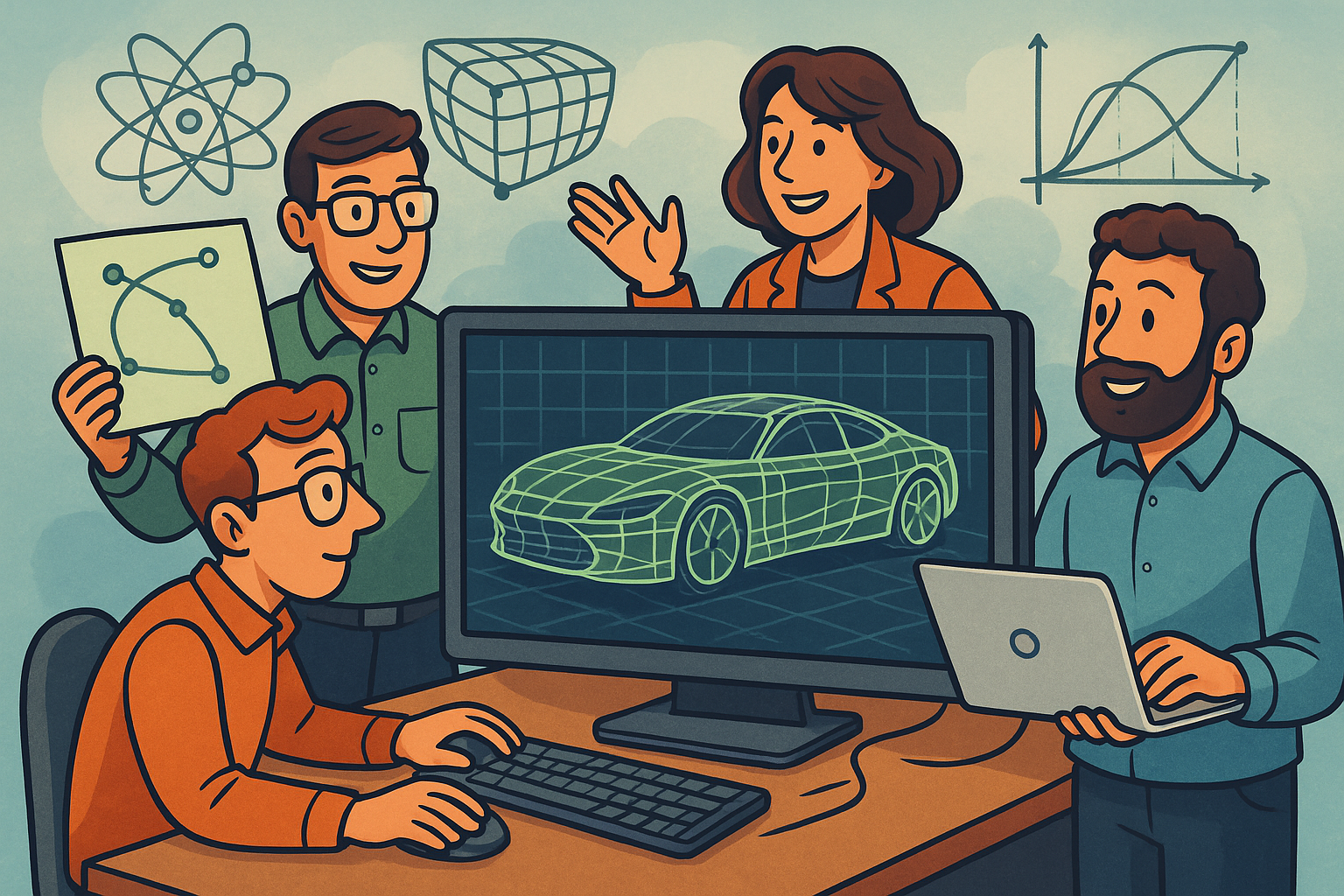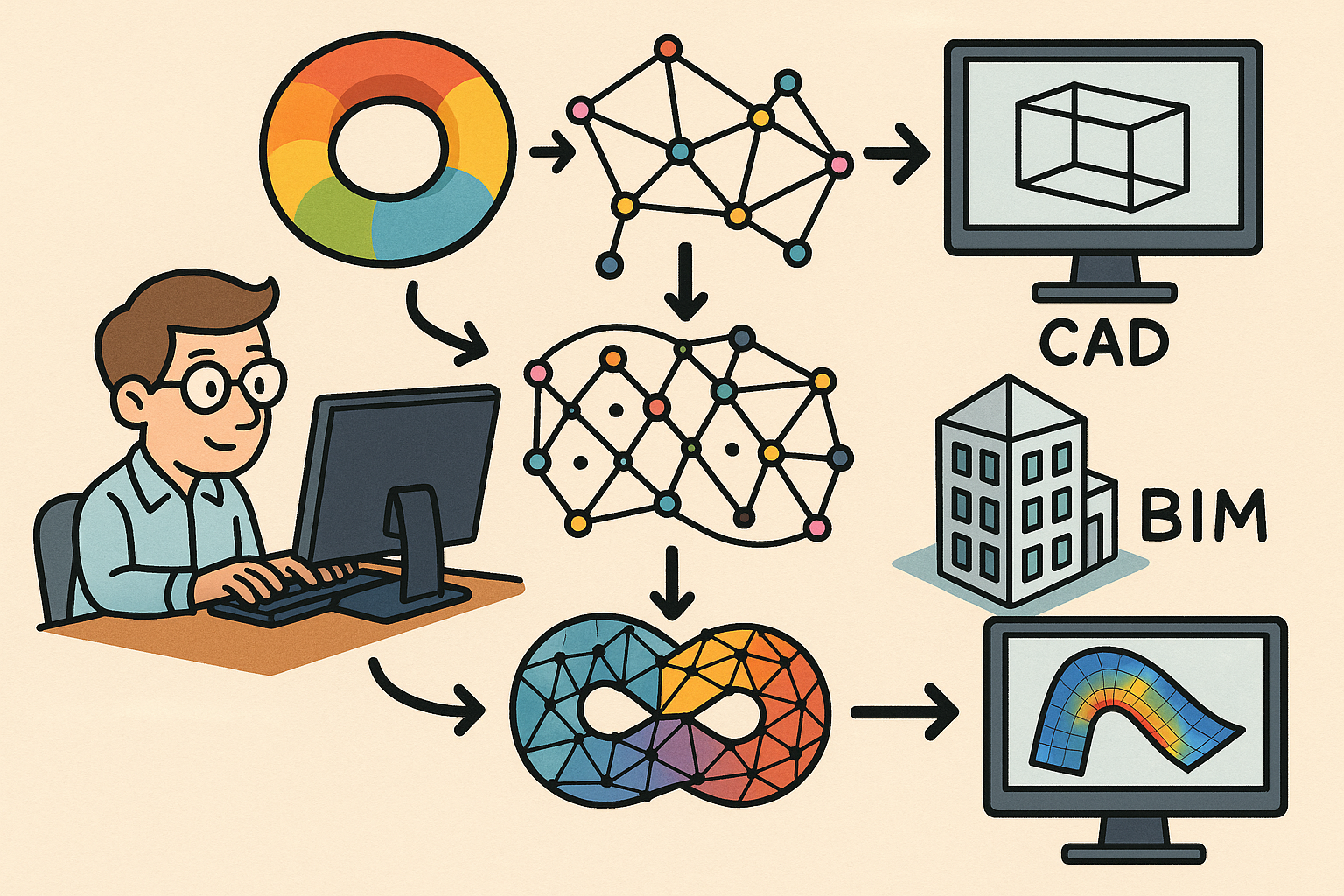Your Cart is Empty
Customer Testimonials
-
"Great customer service. The folks at Novedge were super helpful in navigating a somewhat complicated order including software upgrades and serial numbers in various stages of inactivity. They were friendly and helpful throughout the process.."
Ruben Ruckmark
"Quick & very helpful. We have been using Novedge for years and are very happy with their quick service when we need to make a purchase and excellent support resolving any issues."
Will Woodson
"Scott is the best. He reminds me about subscriptions dates, guides me in the correct direction for updates. He always responds promptly to me. He is literally the reason I continue to work with Novedge and will do so in the future."
Edward Mchugh
"Calvin Lok is “the man”. After my purchase of Sketchup 2021, he called me and provided step-by-step instructions to ease me through difficulties I was having with the setup of my new software."
Mike Borzage
Design Software History: Founding Innovations of Alias Systems: Transforming Automotive Design through NURBS and Advanced Computational Techniques
May 25, 2025 10 min read


Origins and Early Developments
The founding of Alias Systems in the early stages of the computer-aided design revolution marked a turning point in the evolution of automotive design technology. In an era when design professionals relied heavily on manual drafting and analog methodologies, Alias Systems emerged with a clear vision to reimagine design possibilities. In a context dominated by rudimentary CAD offerings, the company was founded with the ambition to bridge the gap between artistic intuition and digital precision by integrating emerging computing technology with the design acumen of automotive engineers. Early designers and innovators in the automotive industry faced significant challenges, including limitations in hardware capability, imprecise modeling techniques, and an overall lack of intuitive software tools that could handle the complexities of three-dimensional forms. The automotive sector, which demanded both accuracy and aesthetic excellence, soon found itself in dire need of tools that not only enhanced precision but also nurtured creativity.
Historical Context and Challenges
In the pre-digital era, pioneering efforts in computer-aided design were met with considerable obstacles. As traditional production methods still reigned, early CAD systems lacked the flexibility and computational power to effectively visualize intricate surfaces, making them particularly ineffective in handling the fluid curves and dynamic shapes demanded by automotive design. Some key challenges included:
- Hardware Limitations: Early computers were not only expensive but also possessed limited processing power, severely restricting the complexity of design tasks.
- Software Constraints: The digital tools available were primitive and often failed to represent smooth curves and detailed surfaces, critical for automotive aesthetics.
- User Experience: The absence of intuitive design interfaces meant that many designers were forced to adapt to cumbersome workflows, often deterring innovation.
Technological Innovations and Breakthroughs
As the company moved forward, the development of key software features signaled a significant departure from previous design paradigms. Among the innovations, the introduction of NURBS-based modeling stands out as one of the most influential. NURBS (Non-Uniform Rational B-Splines) offered designers unprecedented flexibility and accuracy in representing complex, free-form shapes, which were critical for modern automotive styling. With NURBS-based modeling embedded at its core, Alias Systems enabled users to refine the intricate curves and surfaces that define high-end automobile aesthetics, bridging creative desires with computational rigor. This breakthrough established a new standard in design, significantly enhancing both the precision and overall quality of the final product renderings.
Integration of Advanced Mathematical Models
The technological leap was further bolstered by the seamless integration of advanced mathematical models that empowered automotive engineers to explore previously unimaginable design possibilities. Alias Systems was at the forefront of integrating algorithms that could manage the intricacies of three-dimensional surfaces, ensuring that every line, curve, and edge was rendered with exacting precision. Key features and innovations in this domain included:
- Mathematical Rigor: By employing advanced geometric algorithms, the software guaranteed that design curves and surfaces remained mathematically sound throughout subsequent modifications.
- Digital Visualization: The evolution of rendering techniques allowed for real-time visualization, thereby offering designers immediate feedback on their concepts, an essential aspect of iterative design processes.
- Simulation Capabilities: The integration of simulation functionalities provided a realistic preview of how designs would perform under various real-world conditions, a critical factor in automotive innovation.
Key Breakthroughs in Rendering and Simulation
The role of enhanced rendering and simulation technologies was pivotal in redefining automotive design. Alias Systems continually pushed the boundaries by delivering milestones that addressed the demands of realism, efficiency, and adaptability. Notable advancements included:
- Enhanced Realism: With superior rendering capabilities, designers were now able to produce photorealistic representations that emphasized every contour and reflective surface of a vehicle.
- Simulation of Dynamics: Advanced simulation tools offered insights into the structural behavior of materials under stress, thereby giving designers the chance to validate and optimize their designs early in the development process.
- Workflow Integration: The capability to integrate these innovations directly into the design workflow minimized interruptions and fostered a more intuitive creation process.
Impact on the Automotive Design Industry
The revolutionary technologies introduced by Alias Systems had far-reaching implications for the automotive design industry. Early adopters of the software witnessed a transformation in their approach to vehicle design. With the integration of Alias Systems' advanced modeling and visualization capabilities, automotive designers were able to conceptualize and iterate their ideas in a digital space with a level of precision that was previously unattainable. These innovations not only revolutionized the design and engineering processes but also raised the industry's expectations for digital modeling and aesthetics. By setting new industry standards, Alias Systems became an integral tool in the creative arsenal of numerous automotive design studios. The software empowered designers by providing them with robust tools for simulation and visualization, ultimately reducing design cycles, improving product quality, and fostering rapid innovation.
Establishing Industry Standards
As the influence of Alias Systems grew, its technological innovations quickly became synonymous with quality and reliability in automotive design. Designers and engineers relied on the software to push the boundaries of what was possible, driving forward ideas that combined form and function seamlessly. The industry recognized several pivotal contributions by Alias, which include:
- Enhanced Digital Workflows: The integration of detailed digital workflows allowed designers to transition effortlessly from initial concept sketches to fully realized virtual models.
- Benchmarking Accuracy: The mathematical precision inherent in the software provided consistency and repeatability, crucial for meeting stringent engineering standards.
- Unified Visualization Platforms: By fostering a unified approach to the visualization of complex designs, Alias Systems enabled a more holistic view of automotive aesthetics and structural integration.
Contributions of Influential Designers and Engineers
The impact of Alias Systems was not just technological—it also left a profound mark on the careers of numerous influential designers and engineers. These professionals, armed with the capabilities provided by the groundbreaking software, redefined the creative process in automotive design. Their work was characterized by:
- Innovation in Aesthetics: Designers challenged traditional norms, leveraging smooth curves and digitally-enhanced surfaces to create visually stunning vehicles.
- Technical Mastery: Engineers integrated simulation data with real-world testing parameters, ensuring that the designs not only looked appealing but also met the rigorous performance standards necessary for automotive safety and durability.
- Collaborative Synergy: The collaborative nature of digital design fostered a dynamic exchange of ideas among artistic visionaries and technical experts, leading to breakthroughs that propelled the entire industry forward.
Legacy and Influences on Modern Design Software
The innovations pioneered by Alias Systems have left an indelible mark on the field of design software and continue to influence modern tools and methodologies. In the decades following the groundbreaking advancements in digital modeling and visualization, the foundational concepts established by Alias have been integrated and evolved in numerous next-generation design tools. The evolution of technology—from early NURBS-based approaches to the incorporation of high-performance computing and machine learning algorithms—can be traced back in part to the pioneering efforts of Alias Systems. This lasting influence is evident in the way software now handles complex surface geometries, enabling designers to achieve both artistic nuance and engineering precision in a single coherent workflow. Today’s digital design ecosystem seamlessly blends practicality with aesthetics, a testament to the enduring legacy initiated by Alias, which remains relevant in performance, scalability, and application versatility.
Modern Innovations Influenced by Alias’s Approach
In modern design software, the influence of Alias Systems manifests in a number of innovative features that continue to define industry standards. These features include:
- Integration of Advanced Rendering Engines: Modern tools now often incorporate real-time rendering engines that provide vivid and accurate representations, building on the legacy of photorealistic visualization introduced by Alias.
- Enhanced Computational Algorithms: The robustness of mathematical modeling in today’s software, integrated with advanced computational algorithms, is a direct descendant of the work pioneered during Alias’s formative years.
- User-Centric Design Interfaces: The iterative improvement in user interfaces and workflow management, influenced by early challenges faced by automotive designers, has led to a more intuitive and efficient design process that modern professionals rely on.
Continuing Relevance in a Modern Context
The enduring impact of Alias Systems is further demonstrated by its continued relevance in contemporary design and visualization landscapes. Modern automotive design studios and product visualization teams rely heavily on principles that were first introduced by Alias. As industry demands evolve, today's software must adapt rapidly while still preserving the accuracy and aesthetic focus that characterized early digital design efforts. Designers and engineers now operate in an environment where:
- Interdisciplinary Collaboration: The boundaries between design, engineering, and simulation have blurred, leading to integrated workflows that streamline the entire product development cycle.
- Advanced Material Simulations: The ability to simulate complex material behaviors in virtual environments is an evolution of early breakthroughs in simulation technologies.
- Global Connectivity: The digital ecosystem now benefits from cloud-based platforms and collaborative tools that build upon the early vision of interconnected digital design processes.
Conclusion
In reflecting upon the historical significance of Alias Systems, it becomes clear that this pioneering company laid the groundwork for a transformation in automotive design that continues to resonate today. The introduction of NURBS-based modeling, the integration of advanced mathematical techniques, and leaps made in rendering and simulation have all contributed to shaping modern design software. Through a deliberate emphasis on precision and creativity, Alias Systems helped establish the standards that define the digital modeling process, driving progress in both aesthetics and engineering performance.
Recap of Historical Significance
The evolution from manual drafting techniques to sophisticated digital environments, as championed by Alias Systems, marks one of the most transformative periods in the design industry. This legacy can be summarized by several key points:
- Technological Pioneering: The breakthroughs in NURBS-based modeling and simulation set a benchmark that modern software continues to follow.
- Industry Transformation: The integration of advanced digital workflows has streamlined industrial design, enabling designers to achieve feats that were once thought impossible.
- Lasting Influence: The design paradigms established in those early days continue to inform the development of current and future automotive and design software tools.
Final Thoughts on Future Advancements
Looking forward, the legacy of Alias Systems serves as a beacon for future advancements in design technology. The enduring impact of its technological innovations highlights the symbiosis between creativity and mathematics—a relationship that will undoubtedly shape the next generation of design tools. As the digital landscape continues to evolve, embracing the lessons of the past can help future designers maintain a balance between aesthetic expression and technical precision. The narrative of Alias Systems, rich with challenges overcome and milestones achieved, reminds us that innovation is a continuous process driven by passion, ingenuity, and the relentless pursuit of perfection. In this ongoing journey, the historical influence of Alias Systems remains a testament to the transformative power of technology in the world of design.
Also in Design News

Design Software History: From Computational Topology to Design Software: Integrating TDA into CAD, BIM and CAE Workflows
December 25, 2025 10 min read
Read More
Scene-Aware LOD: Perception-Driven Fidelity for Scalable Design Visualization
December 25, 2025 12 min read
Read More
Cinema 4D Tip: Hair-to-Spline Workflow for Stylized NPR Ribbons in Cinema 4D
December 25, 2025 2 min read
Read MoreSubscribe
Sign up to get the latest on sales, new releases and more …


